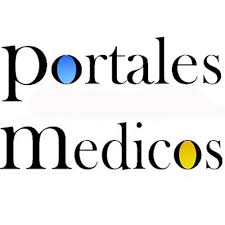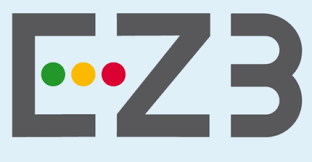Adaptación cultural y validación del dizzines handicap inventory (dhi) versión peruana
Cultural adaptation and validation of the dizzines handicap inventory (dhi) peruvian version
Resumen
La patología vestibular presenta diferencias entre inicio y curso de cada paciente, por ello, es importante evaluar la autopercepción del paciente ante su enfermedad. Con este fin, Jacobson y Newman (1990) elaboraron el Dizzines Handicap Inventory (DHI), el cual valora las alteraciones del sistema vestibular a nivel físico, emocional y funcional, convirtiéndose en el instrumento más aceptado, razón por la cual ha sido traducido a idiomas como el alemán, ruso, portugués, español o italiano entre otros, teniendo mayor relevancia para nuestra realidad las traducciones realizadas al español en España, México o Colombia, a partir de las cuales se han hecho adaptaciones culturales y validaciones en países como México, Colombia, Argentina y Chile. Conocedores de la importancia de esta prueba para la evaluación de los pacientes, se realizó la adaptación cultural y la validación del DHI a la realidad lingüística peruana, tomando como base la traducción y adaptación de Pérez et al. (2000), debido a que esta versión presentó una consistencia interna de α=0,92 para el DHI total, el componente emocional de α=0,8, físico de α=0,85 y funcional de α=0,66, siendo estos resultados próximos al resultado obtenido por Jacobson y Newman en 1990. Esta validación se hizo a través del criterio de jueces expertos, por medio del V de Aiken con un índice de confianza del 95%, obteniendo 0,93 de índice de confiabilidad total, 0,93 nivel físico, 0,91 nivel emocional y 0,93 nivel funcional, quedando el instrumento adaptado a la realidad lingüística peruana y validado.
ABSTRACT:
Vestibular pathology presents differences between the beginning and the course of each patient, therefore, it is important to evaluate the patient's self-perception of his disease. To this end, Jacobson and Newman (1990) developed the Dizzines Handicap Inventory (DHI), which assesses changes in the vestibular system at a physical, emotional, and functional level, becoming the most widely accepted instrument, which is why it has been translated into languages such as German, Russian, Portuguese, Spanish or Italian among others, with greater relevance for our reality the translations made into Spanish in Spain, Mexico or Colombia, from which cultural adaptations and validations have been made in countries such as Mexico, Colombia, Argentina and Chile. Aware of the importance of this test for the evaluation of patients, the cultural adaptation and validation of the DHI to the Peruvian linguistic reality was carried out, based on the translation and adaptation of Pérez et al. (2000), because this version presented an internal consistency of α=0.92 for the total DHI, the emotional component of α=0.8, physical of α=0.85 and functional of α=0.66, these results being close to the result obtained by Jacobson and Newman in 1990. This validation was made through the criteria of expert judges, through Aiken's V with a confidence index of 95%, obtaining a total reliability index of 0.93, 0.93 physical level, 0.91 emotional level and 0.93 functional level, leaving the instrument adapted to the Peruvian linguistic reality and validated.
DOI:
Palabras clave
Referencias
Caldara, B., Asenzo, AI., Brusotti Paglia, G., Ferreri, E., Gomez, RS., Laiz, MM., Luques, ML., Mangoni, AP., Marazzi, C., Matesa, MA., Peker, G., Pratto, RA., Quiroga, CE., Rapela, L., Ruiz, VR., Sanchez, N., Taglioretti, CL., Tana, AM. y Zandstra, IV. (2012). Adaptación cultural y validación del Dizziness Handicap Inventory: versión argentina. Acta Otorrinolaringológica Española, 63(2), 106-114. doi: 10.1016/j.otorri.2011.09.006. Epub 2011 Dec 6.
Carmona, S., Kattah, J. (2017) Manejo del síndrome vestibular agudo. Buenos Aires, Argentina: Librería Akadia Editorial.
Ceballos, R. y Vargas, A. (2004). Aplicación y utilidad del Dizziness Handicap Inventory en pacientes con vértigo del Servicio de Otorrinolaringología del Hospital de Especialidades del Centro Médico Nacional Siglo XXI. An Med Asoc Med Hosp ABC. 49(4), 176-183. https://www.medigraphic.com/pdfs/abc/bc-2004/bc044d.pdf
Guerra-Jiménez, G., Arenas A., Falcón, J., Pérez, D. y Ramos, A. (2017). Epidemiología de los trastornos vestibulares en la consulta de otoneurología. Acta Otorrinolaringol Esp. 68(6), 317-322. http://dx.doi.org/10.1016/j.otorri.2017.01.007
Hernández-Rodríguez, I., Gallardo-Ollervides, F., Quijada-Cruz M., Lozano-Cuenca, j., López-Canales, J. (2017). Validación del cuestionario de discapacidad por vertigo (Dizziness Handicap Inventory) en el Hospital Central Militar. An Orl Mex; 62(3), 147-155.
Jacobson, G. y Newman, C. (1990). The development of the Dizziness Handicap Inventory. Arch Otolaryngol Head Neck Surg; 116(4), 424-427. doi: 10.1001/archotol.1990.01870040046011.
Murdin, L., y Schilder, A. (2015). Epidemiology of balance symptoms and disorders in the community: A systematic review. Otol Neurotol; 36(3), 387-392, http://dx.doi.org/10.1097/MAO.0000000000000691
Newman-Toker, D. y Edlow, J. (2015). TiTrATE A Novel, Evidence-Based Approach to Diagnosing Acute Dizziness and Vertigo. Elsevier Neurologic Clinics, 33(3), 577-599. https://doi.org/10.1016/j.ncl.2015.04.011.
Oliveira, A., Gazzola, J., Natour, J., y Ganança, F. (2007). Versão brasileira do Dizziness Handicap Inventory. Pró-Fono Revista de Atualização Científica, Barueri (SP), 19(1), 97-104. https://www.scielo.br/j/pfono/a/ktWPnBSgRG75TFRSnSJrv6p/?format=pdf〈=pt
Peña, A. (2011). Homologación lingüística nacional del Dizziness Handicap Inventory (test de discapacidad vestibular). Revista de otorrinolaringología y cirugía de cabeza y cuello, 71(1), 85-88. https://dx.doi.org/10.4067/S0718-48162011000100013
Pérez, N., Garmendia, I., Martin, E., y García-Tapia, R. (2000). Adaptación cultural de dos cuestionarios de medida de salud en pacientes con vértigo. Acta Otorrinolaringológica Española, 51(7), 572-580.
Tapia-Egoavil, R., Cabrera-Iturrizaga, M. y López-Soria, J. (2019). Frecuencia de atenciones por disfunción vestibular periférica en hospitales de nivel III, Perú. Revista Médica Herediana, 30(2), 87-93. https://dx.doi.org/https://doi.org/10.20453/rmh.v30i2.3547
Walteros, D., Bernal, E., Pineda, A., Oliveros, JC. y Sastoque, A., (2009). Validez y confiabilidad del DHI versión colombiana. Areté. 9(1), 122–139. https://arete.ibero.edu.co/article/view/418
Enlaces refback
- No hay ningún enlace refback.
Depósito Legal Electrónico: ME2016000090
ISSN Electrónico: 2610-797X
DOI: https://doi.org/10.53766/GICOS
| Se encuentra actualmente registrada y aceptada en las siguientes base de datos, directorios e índices: | |||
 | |||
 |  |  |  |
 |  | ||
 |  |  |  |
 |  |  |  |
 |  |  |  |
 |  | ||
![]()
Todos los documentos publicados en esta revista se distribuyen bajo una
Licencia Creative Commons Atribución -No Comercial- Compartir Igual 4.0 Internacional.
Por lo que el envío, procesamiento y publicación de artículos en la revista es totalmente gratuito.

